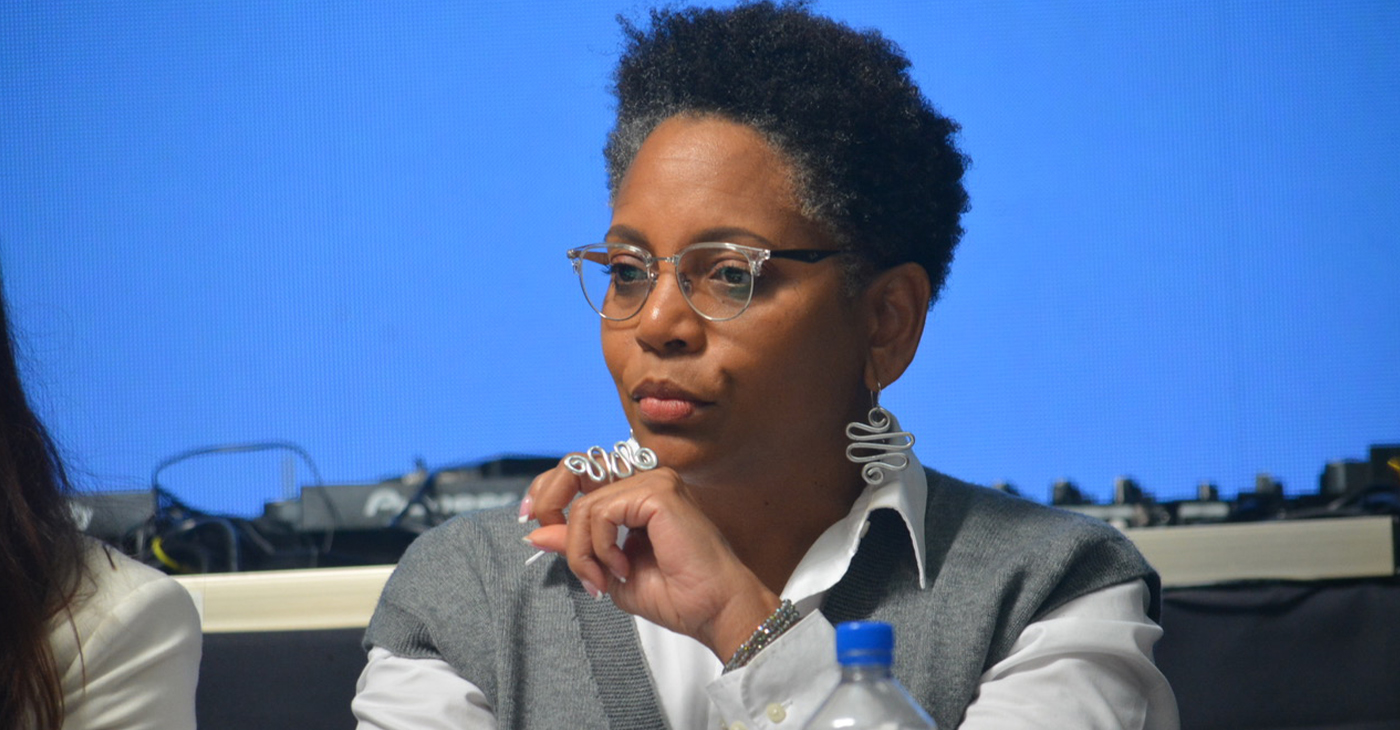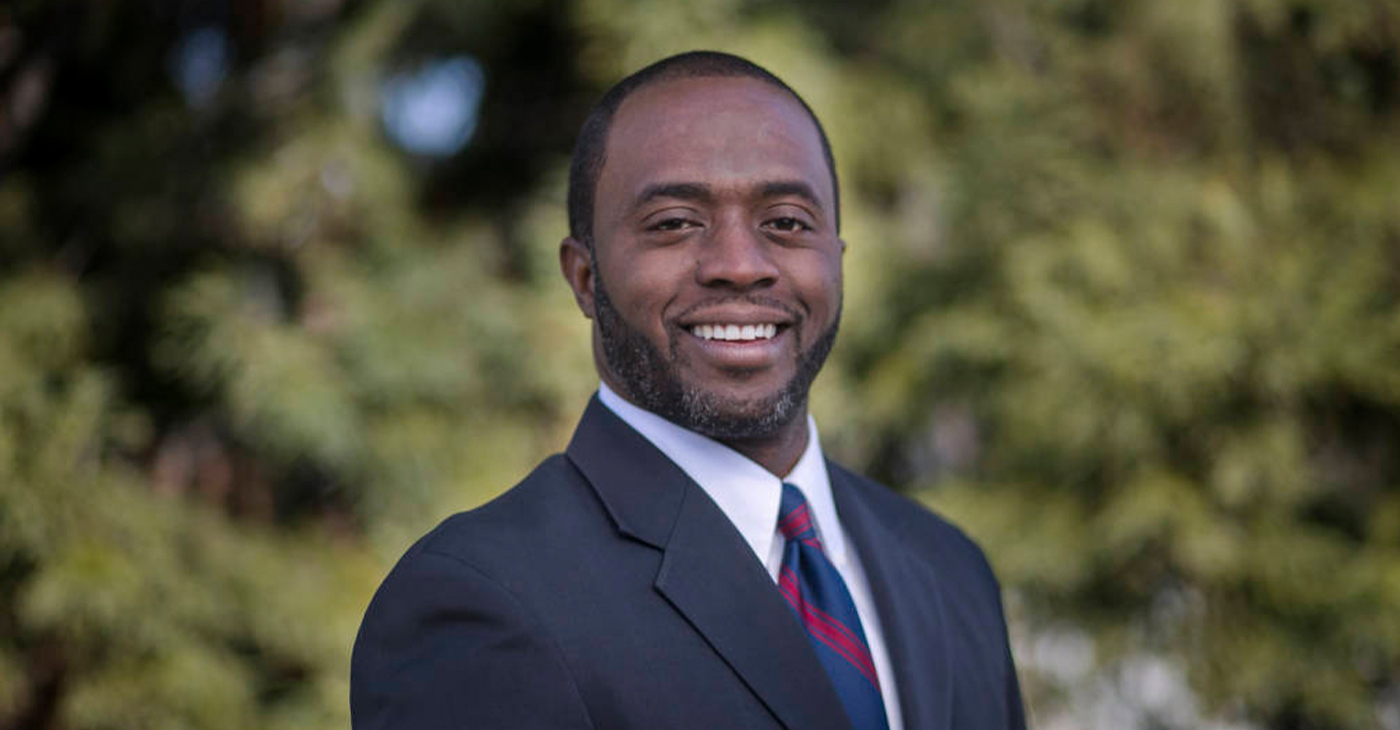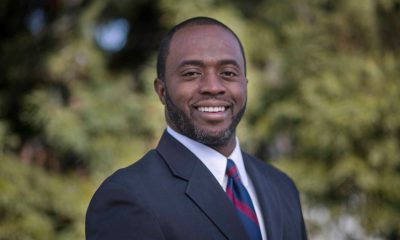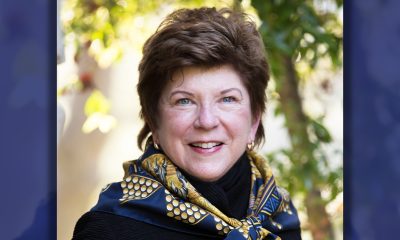California Black Media
California Legislature Fails to Pass Concealed Firearm Law on a Technicality
As gun violence plagues the country, the tug-of-war between gun rights and gun regulations on a local and national level will likely continue. Although California has some of the toughest gun laws in the country, the Legislature has yet to find a solution for concealed carry permits.

By Maxim Elramsisy | California Black Media
On the last night of this year’s legislative session last week, the State Assembly rejected Senate Bill (SB) 918, authored by state Sen. Anthony Portantino (D-La Cañada Flintridge). The bill — written to strengthen restrictions on concealed firearm permits — was one of several bills the Legislature did not approve during the tension-filled finale to a session marked by pointed debate among members of the Assembly’s Democratic majority.
Before the final vote, supporters of the legislation added an Urgency amendment so it could go into effect immediately — instead of Jan. 1, 2023, when bills passed during the current legislative session take effect.
As an Urgency Measure, SB 918 required 54 votes in the Assembly to pass, rather than the usual 41. The bill received 53 votes which is more than enough votes needed to reach the Governor’s desk had the urgency amendment not been added.
Last June, the Supreme Court of the United States ruled in New York State Rifle & Pistol Association v. Bruen that “may carry” laws giving states discretionary authority to reject concealed carry permits violated the Second Amendment. The decision rendered California’s law requiring applicants to show “good cause,” or a justifiable reason for needing such a permit unconstitutional.
In his opinion on the case, Justice Clarence Thomas, wrote that states could still prohibit guns in “sensitive places.” Chief Justice John Roberts, joined by Justice Brett Kavanaugh, wrote in a concurring opinion that the ruling did not affect “shall issue” laws requiring objective licensing requirements such as “fingerprinting, a background check, a mental health records check, and training in firearms handling, and in laws regarding use of force, among other possible requirements.”
SB 918 complies with the Supreme Court ruling by designating courts, places of worship, zones around schools, hospitals, public parks, libraries, airports, public transportation and bars as sensitive places. The bill requires authorities to review publicly available statements including social media to assess whether applicants present a danger to the public.
Applicants would be required to submit to in-person interviews to ensure they are “qualified,” and licensing officials will be required to interview at least three-character references. The state would also give licensing officials, usually a sheriff’s office, greater ability to revoke a license.
Initially, leaders believed that the measure had enough support to pass with an urgency amendment allowing it to go into effect this month. After the bill passed the Senate with a super majority (2/3) of the votes, it failed to gain a super majority vote in the State Assembly. Seven Democratic Assemblymembers voted against the bill or abstained from voting.
Notably, two Democratic members, Adam Gray (D-Merced) and Rudy Salas (D-Bakersfield) who are running for Congress in swing Central Valley districts may have felt the possibility of a political backlash by supporting gun control measures. Retiring Assemblymember Patrick O’Donnell (D-Long Beach), voted against the measure, though he was expected to support it.
“I’m very disappointed in the outcome,” the bill’s author, Portantino, told California Black Media. “But for one assembly member who switched their vote from aye to no, we would have had the 54 votes. I plan on reintroducing the bill on Dec. 5. I’ve already spoken to the governor and the Attorney General.”
If it had passed, the bill was likely to face legal challenges because many critics believe that it is too restrictive. The requirement of interviews and character references are points of contention for gun rights groups.
For Gov. Gavin Newsom, prioritizing gun control measures is still a leading priority in this legislative term, responding to an uptick of gun violence across the country. As of Sept. 2, the Gun Violence Archive reports 450 mass shootings in 2022, compared to 417 in all of 2019.
“California has the toughest gun safety laws in the nation, but none of us can afford to be complacent in tackling the gun violence crisis ravaging our country,” said Newsom. “These new measures will help keep children safe at school, keep guns out of the hands of dangerous people and responsibly regulate the sale of firearms in our communities.”
Though defeated in this attempt to regulate concealed firearms, Newsom has a number of notable legislative victories, including AB 2571, which restricts the marketing of firearms to children and AB 1594, which strips gun manufacturers of some legal protections when their products are used to commit acts of violence. SB 1327 and AB 1621 target ghost guns by restricting their manufacture, transportation and sale and close the loophole that allowed sale of incomplete and unserialized “firearm precursors.”
As gun violence plagues the country, the tug-of-war between gun rights and gun regulations on a local and national level will likely continue. Although California has some of the toughest gun laws in the country, the Legislature has yet to find a solution for concealed carry permits.
“Together, all of the gun laws that we passed make California safer,” Portantino said, “though not having a CCW (concealed weapons permit) consistent with the Supreme Court decision hurts California, which is why I’m committed to bringing it back on Dec. 5.”
California Black Media
Cinco De Mayo: Five Interesting Facts You Should Know About the Popular Mexican American Holiday
To explore the historical significance of Cinco De Mayo, we step back to the origins of the commemoration, share how some Mexican American Californians regard it and trace how it has morphed into the celebrations we see today.

By Edward Henderson, California Black Media
To explore the historical significance of Cinco De Mayo, we step back to the origins of the commemoration, share how some Mexican American Californians regard it and trace how it has morphed into the celebrations we see today.
Celebrations in the United States began in 1862 in Columbia, California, a small town located in the foothills of the Sierra Nevada in Tolumne County, according to that town’s website.
Today, millions of Americans celebrate Cinco De Mayo annually with 120 official celebrations organized across the United States.
This day has become a cultural point of pride for Mexican Americans and other Latino communities in the United States. It serves as a time to affirm and celebrate their cultures with other Americans of all backgrounds as they highlight their contributions to American history and society.
Joseph Soltero, a Mexican American living in Escondido, shared his perspective on Cinco de Mayo with California Black Media. He learned about Cinco De Mayo from his grandfather and talked about the extent to which his family and San Diego County community celebrate the holiday.
“We knew September 16 was really Mexican Independence Day, but kids in my school would always mistake Cinco De Mayo as our Independence Day. [Cinco De Mayo] is not really even a Mexican holiday,” said Soltero. “It’s something people do to have an excuse to buy drinks, have fun and spend a little money at taco shops.”
Like Soltero, many Mexican Americans (and other Latino Californians) do not take the support and solidarity they receive from people of other races on Cinco De Mayo for granted. They also appreciate when people take the time to learn about the cultural significance of the day and avoid some of the cultural tropes that can easily whisper undertones of racism.
To help raise your awareness about the origins and cultural significance of the day, here are 5 little known facts about Cinco De Mayo:
- Cinco De Mayo is not Mexican Independence Day. It is the anniversary of the Battle of Puebla. This military victory on May 5, 1862, over the French forces of Napoleon III was hailed as a symbol for Mexican resistance to foreign influence.
- The holiday was not given much historical significance outside of Puebla, and it has not been celebrated on a large scale in Mexico. However, during the Civil War, Mexican Americans in California, Oregon and Nevada who supported the Union drew inspiration from the victory over the French-backed Confederate forces.
- The Chicano civil rights movement in the 1940s gave a new energy to celebration of the holiday in the United Sates as a symbol of national pride.
- In the 1980s and 1990s, beer companies’ marketing strategies targeted Mexican Americans by encouraging them to celebrate their heritage – and Cinco De Mayo –with Coronas, Bud Light, and Dos Equis. This created the perceived connection between Cinco De Mayo, alcohol, and merrymaking.
- Los Angeles hosts the largest Cinco De Mayo celebration in the country.
As we join Mexican American Californians to celebrate Cinco De Mayo next week, let’s deepen our cultural understanding.
Let’s use this occasion to commit to learning more about our neighbors, colleagues and friends of other races and ethnicities.
This resource is supported in whole or in part by funding provided by the State of California, administered by the California State Library in partnership with the California Department of Social Services and the California Commission on Asian and Pacific Islander American Affairs as part of the Stop the Hate program. To report a hate incident or hate crime and get support, go to CA vs Hate.
Antonio Ray Harvey
Working Group: More Entry-Level Homes Could Help Solve Housing Crisis
The Community Housing Working Group hosted a briefing on April 23 at Cafeteria 15L in Sacramento. Discussions focused on how the housing crisis in California affects Black and Brown communities and explored ways to provide low-income families and individuals with affordable housing.

By Antonio Ray Harvey, California Black Media
The Community Housing Working Group hosted a briefing on April 23 at Cafeteria 15L in Sacramento. Discussions focused on how the housing crisis in California affects Black and Brown communities and explored ways to provide low-income families and individuals with affordable housing.
Tia Boatman Patterson, CEO and President of the California Communities Reinvestment Corporation, said “entry-level housing” is not available as it was in the past, adding that affordable units were a major point of entry into homeownership for many families in the Black community.
“My mother bought her first house when I was in junior high. It was an 850-square foot, two-bedroom and one-bathroom house in 1978. That house cost $30,000,” Boatman-Patterson said.
“A woman working part-time at JCPenney was able to afford that house. We don’t build these types of housing now. We do not build entry-level homeownership,” she added.
The Community Housing Working Group is a collection of diverse community organizations from across California working together to address housing challenges in their communities. The organization believes that solving the affordable housing crisis will require creating enough smaller, lower-cost, multi-family homes located near jobs, transit, and good schools.
The briefing included a panel discussion titled, “Exclusionary Zoning: A Look Back and a Path Forward.” Boatman-Patterson participated in that session along with Henry “Hank” Levy, Treasurer-Tax Collector for Alameda County, and Noerena Limón, consultant, Unidos U.S., and Board Member of California Housing Finance Agency.
Boatman-Patterson, a former Associate Director for Housing, Treasury and Commerce in the Office of Management and Budget for the Biden Administration, started her presentation by highlighting how exclusionary single-family zoning is contributing to continued segregation of California communities.
She said that single-family zoning originated in the Bay Area city of Berkeley in 1916.
“By creating single-family zoning and having fenced-off communities, you were able to exclude the ‘others,’” Boatman-Patterson said. “It really was a method to exclude — what they called ‘economic segregation’ — but that was a guise for racial segregation. Single-family zoning, along with redlining, became a systemic approach to exclude based on affordability.”
Title VIII of the federal Civil Rights Act of 1968 — commonly known as the Fair Housing Act of 1968 – is the U.S. federal legislation that protects individuals and families from discrimination in the sale, rental, and financing of housing. It was passed to open the doors to affordable housing.
In 1968, 65.9% of White families were homeowners, a rate that was 25% higher than the 41.1% of Black families that owned their homes, according to National Low-Income Housing Coalition. Today, those figures have hardly changed in the Black community, although White homeownership has increased five percentage points to 71.1%.
Boatman Patterson said the rate has not changed in Black and Brown communities because financing for affordable entry-level homes is almost nonexistent. The homeownership disparities contribute to the disturbing racial wealth gap in the nation, according to the National Low-Income Housing Coalition’s October 2018 report.
“We really must align the financing with the actual building of units, which we haven’t necessarily done. Because of this misalignment, I think we continue to see problems,” Boatman-Patterson said.
California Black Media
State Ed Chief Tony Thurmond Pushes Bill to Train Educators
State Superintendent of Public Instruction (SSPI) Tony Thurmond is advocating for comprehensive training for teachers in reading and math, emphasizing the urgent need to improve student academic outcomes across California. On April 24, during testimony in the Senate Education Committee, Thurmond backed Senate Bill (SB)1115, which aims to provide evidence-backed educator training. The committee passed the bill with a 7-0 vote.

By California Black Media
State Superintendent of Public Instruction (SSPI) Tony Thurmond is advocating for comprehensive training for teachers in reading and math, emphasizing the urgent need to improve student academic outcomes across California.
On April 24, during testimony in the Senate Education Committee, Thurmond backed Senate Bill (SB)1115, which aims to provide evidence-backed educator training. The committee passed the bill with a 7-0 vote.
Thurmond pointed out to the committee that existing funding for educator training in literacy and math only covers about one-third of California’s educator workforce. SB 1115, Thurmond said, would fund the remaining two-thirds.
“This is an issue of moral clarity,” according to Thurmond. “In the fifth-largest economy in the world, and in an age when we have access to substantial brain science about how students learn, it should be unacceptable to train only some educators in the best strategies to teach essential skills.”
SB 1115 incorporates multiple research-backed methods, including phonics, and it aligns with the California ELA/ELD Framework, which encourages biliteracy and multilingualism.
Thurmond emphasized the moral imperative behind the push for enhanced training by noting that 70% of incarcerated adults struggle with reading or are illiterate.
“Every child should feel supported as they learn to read and every teacher should feel confident in their ability to support students’ foundational literacy,” Thurmond said. “SB 1115 is about ensuring that all children have the opportunity to read by third grade, and that all children have a shot at the life-changing outcomes that come from early literacy.”
The next step for SB 1115 is a hearing in the Senate Appropriations Committee on May 6.
-

 Community3 weeks ago
Community3 weeks agoFinancial Assistance Bill for Descendants of Enslaved Persons to Help Them Purchase, Own, or Maintain a Home
-

 Activism4 weeks ago
Activism4 weeks agoOakland Post: Week of April 3 – 6, 2024
-

 Business3 weeks ago
Business3 weeks agoV.P. Kamala Harris: Americans With Criminal Records Will Soon Be Eligible for SBA Loans
-

 Activism3 weeks ago
Activism3 weeks agoOakland Post: Week of April 10 – 16, 2024
-

 Community3 weeks ago
Community3 weeks agoAG Bonta Says Oakland School Leaders Should Comply with State Laws to Avoid ‘Disparate Harm’ When Closing or Merging Schools
-

 Community2 weeks ago
Community2 weeks agoRichmond Nonprofit Helps Ex-Felons Get Back on Their Feet
-

 Community2 weeks ago
Community2 weeks agoOakland WNBA Player to be Inducted Into Hall of Fame
-

 Community2 weeks ago
Community2 weeks agoRPAL to Rename Technology Center for Retired Police Captain Arthur Lee Johnson























































